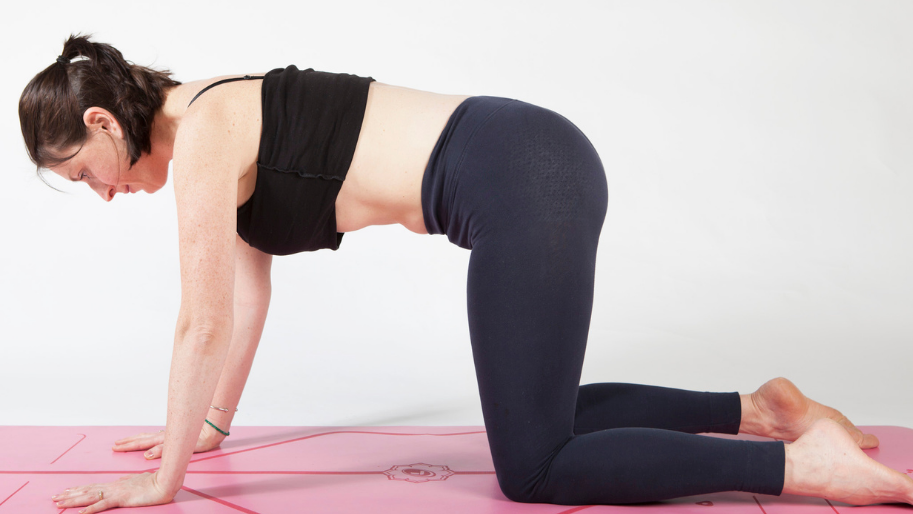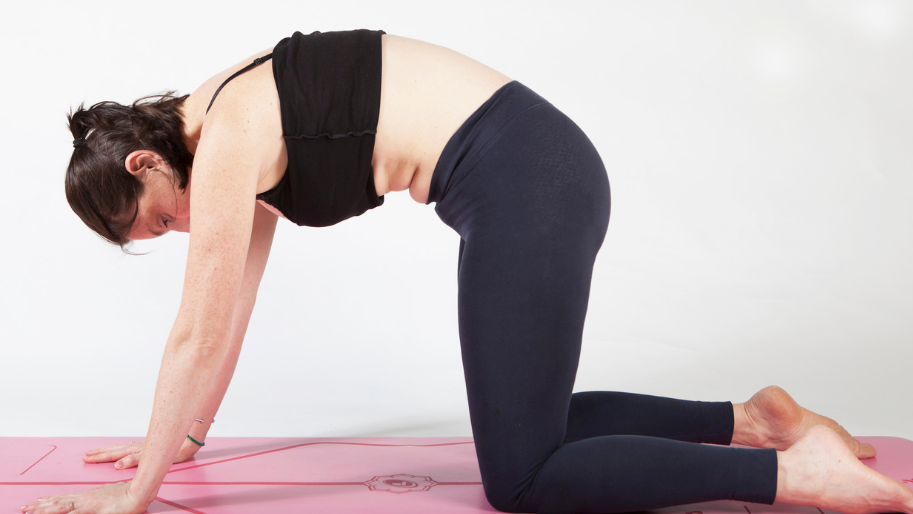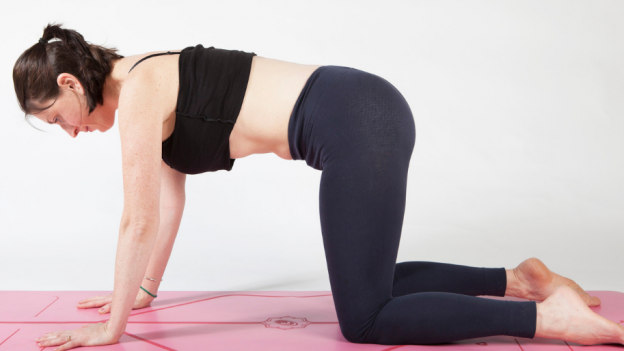
Back to your mat and into your body – the best online classes you can do at home after having a C-Section Birth with Sally Parkes
Why have a C-Section Birth?
Most women and birthing people I have connected with through my many years of teaching pregnancy yoga, hope to have an unassisted vaginal birth experience. However, birth can often present us with unexpected surprises and challenges. Often we are guided down the route of a medicalised birth or a caesarean birth (C-Section or more gently put an abdominal birth).
A C-Section birth can quite simply be life saving for both mother and baby.
Sally Parkes
Whilst a caesarean birth is understandably, not everyone’s first choice, it can sometimes be necessary for a safer birth experience. This can be the case if the baby is in a more challenging birth position (e.g. transverse presentation or footling breech – check out Sally’s ‘optimal foetal positioning class’), or if the mother has a condition such as Placenta Previa (when the placenta covers the opening to the cervix). In these cases a C-Section birth can quite simply be life saving for both mother and baby.
That said, it is important that we do not under-estimate the impact that caesarean birth has on the physical, emotional and energetic bodies. Whether the caesarean is elective or an emergency, it involves major abdominal surgery including a spinal tap (anaesthesia administered through a spinal disc). Movement and yoga after a C-Section birth can feel overwhelming and sometimes a little daunting.
How Soon can you Start Yoga after a C-Section?
After having a c-section birth it is a good idea to take plenty of time to rest and recover. There is no rush to get back into any movement or Yoga practice. Take the first ten weeks to nourish your body with good food and as much sleep as is possible with a new born. After ten weeks you can slowly start incorporating movement with a focus on aligning your spine and pelvis. If you continue to recover and feel good then after week twelve you can start to re-train your abdominal muscles and core stability with post-natal yoga and pilates classes. Remember to practice patience and have compassion for your body as it heals.
The First Ten Weeks: Rest & Recover
For at least the first ten weeks it is important to take as much rest as possible and include just a small amount of movement to help blood and lymph flow (blood clots are always a risk after any surgery). It is also important to eat a nutritionally dense diet rich in soluble fibre and healthy fats including collagen (collagen being excellent for tissue cell repair).
During this time I recommend taking any help offered to offer the mother time to focus on her healing journey. It is also important for the mother to focus on creating a bond with her new baby. The hormones (mainly Oxytocin) required for this vital bond, can be hindered following a C-Section birth. This hindrance can occur as the surgery interrupts the natural hormonal cascade effect that a vaginal birth creates. Therefore, any time spent with skin to skin contact with a parent, feeding, cuddling, and snoozing together can be paramount to the bonding process and overall healing.
Being mindful of movement throughout the day can also help the recovery journey. Below are my suggestions for small things that can make a huge difference to the stress placed upon the scar tissue and also to ease some of the inevitable lower back pains:
- Set up a changing table instead of changing your baby on the floor
- When you move from lying to sitting, first roll to the side and then support your body weight with your arms
- Use a feeding pillow to rest the baby onto, this means the parent can sit straighter and with more comfort
After Ten Weeks: Slowly Start Moving
From around the ten weeks stage you can begin some extra movement. The focus of this should be the postural alignment of the spine and pelvis. Whilst healing from any abdominal surgery spine will naturally move into flexion. This is to protect the abdomen whilst it is vulnerable and is known as a ‘guarded posture’. With time, this places undue pressure on the lower back and neck, leading to the shoulders and chest becoming rounded and tight and for breathing to become restricted.
- Spine & Pelvis Stretch: A good place to start in the healing journey and to find the new normal in your post birth body, is a gentle stretch out the spine and pelvis daily. One way to do this, without too much strain on the abdomen, is to place the hands on the edge of a table or windowsill and lower the torso so it is parallel to the floor, and the hips are over the ankles, so the body is at a right angle. Hold for ten long deep breaths. This will give a wonderful stretch to the backs of the hips and legs too.
- Shoulder Rolls: Throughout the day, stand tall and roll the shoulders down away from the ears, consciously drawn the abdomen into the spine. This is especially helpful when pushing the stroller/buggy, often a moment when the gaze is dropping forwards due to looking at the baby and this stooped position can put a lot of strain on the neck. This is the perfect time to reset your posture and to adopt a more positive movement pattern. Standing tall, rolling the shoulders, and taking a breath will help the parent to feel instantly more positive as they walk in the fresh air with their precious baby.
Gently stretch out the spine and pelvis daily.
Sally Parkes
From Week Twelve: Re-train the Abdominal Muscles
From around twelve weeks post-natal, we can generally start to work more directly on the abdominal area. It is possible that the vertical abdominal muscles themselves will still be a little separated (this is normal following any birth experience), so this area should be trained as a unit involving all the surrounding muscle groups as opposed to completely isolating the abdomen.
Effective movements include:

Basic Abdominal Muscle Engagement
Start in box position and ensure the spine is in a neutral alignment. Exhale deeply and at the same time draw the navel in towards to spine so the entire abdominal area gently contracts. Relax on the inhale. Repeat this ten times. Now stretch back into Downward Facing Dog. Take five breaths before returning to a Box Position. Now repeat as above but this time as you exhale and draw the abdominal muscles in towards the spine, also move the spine into flexion, ie Cat Stretch. Repeat ten times.

Shoulder Bridge Roll for Mobility:
Lie face up with the legs bent and the knees aligned directly over the ankles. The arms are either side of the head in a right-angle position. Drop the lumbar spine towards the ground and lift the pelvis in a scooping action. Now gradually peel the spine away from the floor, as though you are lifting one vertebra at a time. Breathe deeply. Pause when the spine is in a neutral diagonal position, before rolling back down very slowly. Repeat 10 times, breathing deeply throughout.

Leg Raise for Core Stability
From box position, draw the navel in towards the spine and on the exhale, lift and extend the right leg. Stay completely focused on keeping the hips and spine static. Lower the leg back down on an inhale. Repeat on the other side until you reach 12-18 repetitions in total. Rest in Childs Pose.
Remember to practice patience. It’s a personal journey as opposed to a race.
Sally Parkes
These gentle movements can be practiced every day. Once the body has settled into its new normal, stronger movements can be introduced into daily activities. Remember to practice patience, and know it’s a personal journey as opposed to a race.
Having a C-Section birth is a large event and the energy it takes to care for a baby and recover from surgery can be colossal. I advise you to be realistic about what you can manage. Start to just set aside ten minutes a day initially and see where it leads. Above all else, remember these practices every single day:
- To breathe deeply, often.
- Regular and gently movement.
- Nourish yourself with pure fluids and nutritious food.
- Acknowledge that your recovery will take time.
- Remind yourself that you are doing a great job.
- Know that you birthed your baby in the best way you could in that moment.
Thank you to Sally Parkes for sharing her wisdom on practicing yoga after C-Section – Sally Parkes BSc runs certified 200hr, Pregnancy and Postnatal Yoga Teacher Training @sallyparkesyoga @sallyparkeswomensyoga





Leave a Reply